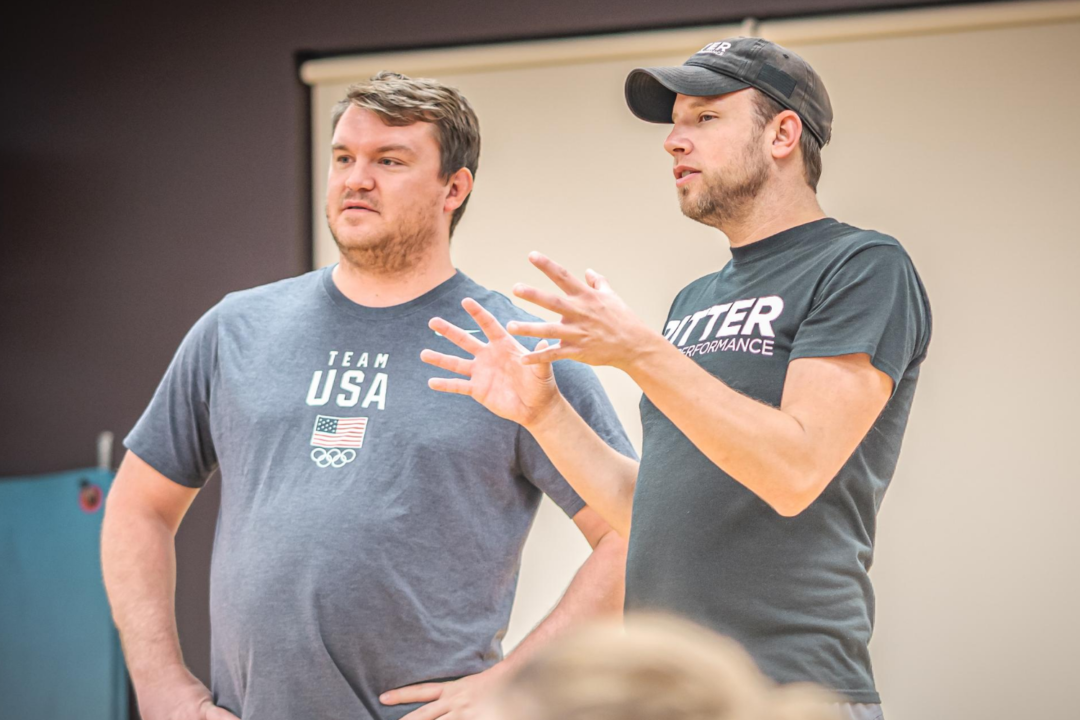You’ve probably seen some amazing dryland workouts and programs. You’ve also probably seen some not-so-great ones. Many programs have all the right exercises and a team that works hard but are missing the foundational aspects of all great dryland programs that are sometimes overlooked. We call these the “hidden factors” of success in dryland. Below we are going to explain the three ways that you can be sure you are getting the most out of your dryland experience:
Here are 3 Hidden Factors to be aware of that, when managed properly, can greatly increase the success of your dryland workouts:
1) Recovery between Dryland Workouts
Have you ever thought about when improvement from a training session actually occurs? During a workout session, swimmers are usually breaking down a significant amount of muscle and expending a ton of energy. After the session, when they are recovering, the benefits of resistance training take place. When you think about it, how your swimmers spend their time after practice is some of the most crucial to their success both in dryland and in the pool.
Making sure swimmers are fueling their bodies with proper nutrition is one area to address in recovery. Athletes in general should be consuming 1 gram of protein per pound of body weight per day. They should also be drinking at least half their body weight of water in ounces per day. Swimmers need fruits, vegetables, complex carbohydrates, and healthy fats to replenish what their body has used in order to build muscle and improve neurological pathways.
Aside from nutrition, swimmers need sleep. Sleeping is where we release hormones that promote muscle growth and recovery. Without it, we are constantly in a state of breaking down instead of rebuilding which leads to a decrease in muscle as well as an increased risk of injury.
Focusing on sleep and nutrition are the simplest ways to build a better recovery and get more out of training.
2) “Clean” Training in Dryland Workouts
We just talked a little about clean eating, but have you ever heard of clean training? In the SURGE Strength Dryland Certification Curriculum, this term refers to working in the “right” energy system during dryland workouts.
We have three energy systems. While we don’t work exclusively in one system, one system is predominantly being used by our muscles depending on what type of activity we are doing.
The first system is called the aerobic energy system. This one is used mostly when we are being sedentary or performing movements that allow our body to recover with oxygen as we breathe. Think of swimming easy laps in the pool or even just sitting on your phone reading this article.
The second system is the glycolytic energy system. We use this one when we are working at a rate that requires energy turnover faster than what our breath can sustain, but at a pace that is manageable. An example of this is swimming at a pace or performing a 2-minute wall sit.
The third is the ATP-PCr system. This energy system requires fast-twitch muscles for short intense bouts of exercise such as a 50 freestyle or a 1 rep max (RM) in the weight room.
While all three systems are important to train, we want to primarily be in the ATP-PCr while seldom going as long to make the glycolytic system the main engine. One of the biggest reasons for this is that the ATP-PCr system leaves very little waste in an athlete’s system, as opposed to the high levels of acidity and other waste products that occur when heavy glycolytic use is required.
To get the benefit of “clean training” in the ATP-PCr system, think of working in short bouts no longer than 30 seconds but at an intensity of over 85% maximum effort. By focusing on shifting our training to focus on building the fast-twitch muscle fibers, we save time both in and out of the pool, recover faster from training sessions, and save our athletes from the symptoms of overtraining.
3) Periodization of Dryland Workouts
Periodization is the structure of organizing microcycles, which are daily dryland workout training sessions, mesocycles, which are blocks of training, and macrocycles, otherwise known as the training year, in a way that optimizes performance and reduces the risk of injury.
Throughout the year, a dryland program that is periodized well will address at least eight variables of training. These include range of motion, volume, load, tempo, rest, exercise order, density, and complexity. A periodized program will also account for meets, tapers, and the offseason.
Without periodization, you don’t really have a program, you just have a workout. Although you may see some benefit from throwing together some swim-specific exercises, you are more likely to miss your target goals and possibly even get injured. By periodizing your dryland program, you can meet mini-goals within each session, a block of training, and training year to bring you closer to your ultimate goals in the pool.
Conclusion
When it comes to dryland workouts, it is common for swim programs to skip over these 3 key attributes and instead focus on what exercises are being done and how hard the athletes are training. While these are important to consider, it is also important to take a bigger look at your dryland program.
As a season progresses, you may find that your swimmers get lost in the daily grind of training and stressors of life. Suddenly you have burnt out swimmers no matter how engaging your program is. Taking simple measures such as encouraging sleep and educating them on nutrition, as well as tailoring programs to address recovery can save a lot of time and burnout.
Addressing the type of training you are enforcing and making sure it is efficient can also fill a gap in dryland results. Focusing on functional, and intentional movements will help the athletes recover better.
Lastly, periodizing your program can make or break the results you see in dryland. Asking how each session and training block brings your team closer to your short- and long-term goals will help you properly progress them through their training year. While challenging athletes in dryland is important, recovery is where the results really take place.
Learn more on how to write better dryland workouts in the SURGE Strength Academy with Dryland 101 Courses.
ENROLL NOW FOR FREE IN THE SURGE STRENGTH ACADEMY
BECOME SURGE STRENGTH DRYLAND CERTIFIED (SSDC)
BUILD BETTER ATHLETES TO GENERATE FASTER SWIMMERS
Courtesy of SwimSwam’s exclusive dryland training partner, SURGE Strength.
SURGE Strength, a strength training brand created by Chris Ritter, CEO of RITTER Sports Performance, aims to build better athletes and faster swimmers through dryland programs, and coaching education.







